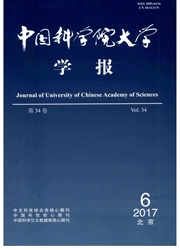

 中文摘要:
中文摘要:
为评价砷污染土壤中种植的蔬菜对人体的健康风险,本研究在砷污染土壤中种植生菜和油菜,利用体外消化(in vitro)方法评估其生物可给性,计算食用砷污染蔬菜条件下人体砷的每日摄入量,评价蔬菜中砷对人体产生的健康风险.结果表明,生菜和油菜中砷的生物可给性均随着蔬菜中砷含量的上升而逐渐降低.在固液比为1∶30的条件下生菜和油菜的生物可给性分别为29.13%~49.39%和27.13%~51.95%,在固液比为1∶100的条件下生菜和油菜的生物可给性大幅提升,分别为42.39%~79.09%和37.40%~76.59%.在固液比为1∶30的条件下,添加外源铁可使其生物可给性分别下降到22.24%~37.88%和23.36%~47.56%,添加外源钙则对其生物可给性几乎没有影响.食用砷污染土壤种植的蔬菜会使人体摄入的砷含量超出世界卫生组织规定的砷每日最高摄入量标准.在提升消化液中铁浓度0.006 7 mol·L-1的情况下,砷的生物可给性降低约6.89%~11.51%,食用含铁的食物能有效地减少人体对食物中砷的摄入.
 英文摘要:
英文摘要:
In the present study,in vitro method was used to assess human health risk of arsenic( As) in vegetables. Lettuce and rape were planted in the soil with different As pollutions,and bioaccessibility of As in the two vegetables was determined. Daily intake of As was also calculated,and the risk to human health was assessed. The results showed that the bioaccessibility of As decreased with the increasing concentration of As in the vegetables. Bioaccessibilities of As in the lettuce and rape were 29. 13%- 49. 39% and 27. 13%- 51. 95%,respectively,at solid-liquid ratio of 1∶ 30. The values sharply rose to 42. 39%- 79. 09% and 37. 40%- 76. 59%,respectively,at solid-liquid ratio of 1∶ 100. At the solid-liquid ratio of 1∶ 30,the iron addition decreased the values to 22. 24%- 37. 88% and 23. 36%- 47. 56%,respectively,in the two vegetables,but the calcium addition made no change for the bioaccessibility of As. In raising the iron content of digestive juices by 0. 0067 mol·L- 1,bioaccessibility of As could reduce by about 6. 89%- 11. 51%. Iron can effectively reduce As intake.
 同期刊论文项目
同期刊论文项目
 同项目期刊论文
同项目期刊论文
 期刊信息
期刊信息
